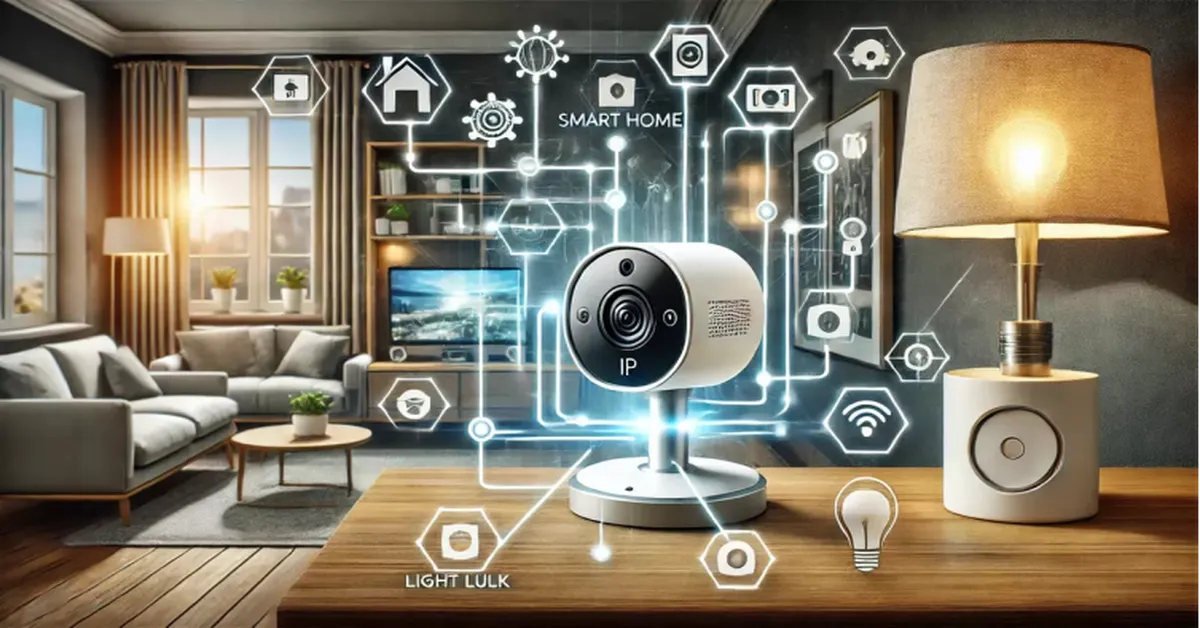The concept of a smart home has evolved from being a futuristic dream to a privilege to a great convenience now. And what can be more beneficial than keeping an eye on your home security, remotely, from any part you’re in? ? This is what IP camera software do.
And specific software allows users to connect and manage multiple cameras from one display, so you can check what’s going on in and around with just a few clicks. But how does it integrate into smart home systems? Let’s find out.
Why Integrate IP Cameras with Smart Home Systems?
IP cameras are more than just tools for surveillance. When integrated in a digital home, these cameras elevate your home’s functionality. Here’s why this is worth considering:
- Enhanced Security: Receive real-time alerts on your phone for unusual activity, even when you’re away.
- Convenience: Access live video feeds through your smart app or voice assistant devices like Alexa or Google Assistant.
- Automation: Pair cameras with sensors to trigger actions such as turning on lights when motion is detected.
- Extra Features: By connecting your IP cameras, you can access additional features such as two-way audio communication, changing camera angles remotely, and more.
- Peace of Mind: Monitor kids, pets, or deliveries, all through a centralized interface.
Getting Started: Key Components
Before diving into the integration process, ensure you have these essential components:
- Compatible IP Camera Software
Don’t brush freeware security camera software aside. Although you may not find some advanced functionality, they are still very useful and can work seamlessly with your smart system.
- Smart Home Hub
A hub like Amazon Echo, Google Nest Hub, or Samsung SmartThings is often the central nervous system. Check if you can connect an app with your hub.
- Stable Internet Connection
High-speed Wi-Fi is crucial for ensuring smooth communication between devices.
- Smartphone or Tablet
A smartphone will help you access the smart home app while a tablet is good for having an overview of security cameras at home. Alternatively, you can also use a PC or laptop, depending on your preference.
A Step-by-Step Guide to Integration
Step 1: Check Compatibility
The first step is to verify if your IP camera software supports integration with your chosen system. Open the hub app and navigate through the connected devices to check if it’s listed. If not, check the camera software’s documentation for compatibility information.
Step 2: Set Up Your IP Camera
Install your camera according to the manufacturer’s instructions. Most cameras have a dedicated app for setup, allowing you to connect the camera to your Wi-Fi network and configure basic settings.
Step 3: Connect and Customize
Add the camera to your smart home. This process will vary depending on the type of hub you have. Generally, you can find it all in the devices section of your hub app, and select “Add New Device.” Follow the prompts to connect your IP camera.
Once added, change the camera’s settings to suit your preferences. For instance, you can adjust resolution or create a scene that triggers the camera’s recording when something happens.
Step 4: Test and Troubleshoot
Good job, everything is set up! Now, test the functionality by monitoring live video feeds and triggering actions through the interface. If there are any issues with connectivity or performance, consult the camera software’s support documentation or contact their customer support for assistance.
Challenges and How to Overcome Them
While integrating IP cameras with smart home systems is straightforward, there can be some hiccups along the way. Here’s how to tackle common challenges:
- Compatibility Issues
If your camera isn’t directly compatible with your smart home system, consider using a middleware solution like IFTTT (If This Then That) or a hub that supports multiple protocols.
- Lag or Connectivity Problems
Ensure your router is positioned centrally and supports the bandwidth required for live video streaming. Upgrading to a mesh Wi-Fi system can improve coverage.
- Privacy Concerns
Always secure your smart home system with strong passwords and two-factor authentication. Allow remote access only to trusted devices and users or even keep it limited to yourself.
Advantages of a Fully Integrated Smart Home
Once your IP cameras are seamlessly integrated, the possibilities are endless. From advanced security to effortless convenience, you can:
- Monitor multiple rooms or zones from a single app
- Use geofencing to activate or deactivate cameras based on your location
- Save energy by integrating cameras with smart thermostats and lighting systems
- Create custom rules and triggers to automate tasks. For example, turn on your porch light as soon as the front door camera detects motion
- Use voice commands to control cameras
- and so on.
Take Your Smart Home to the Next Level
Integrating IP camera software with smart home systems is a step toward making your home more intelligent, safer, and efficient. With the right tools, compatibility checks, and thoughtful automation, you can create a harmonious system that keeps you connected and in control.







